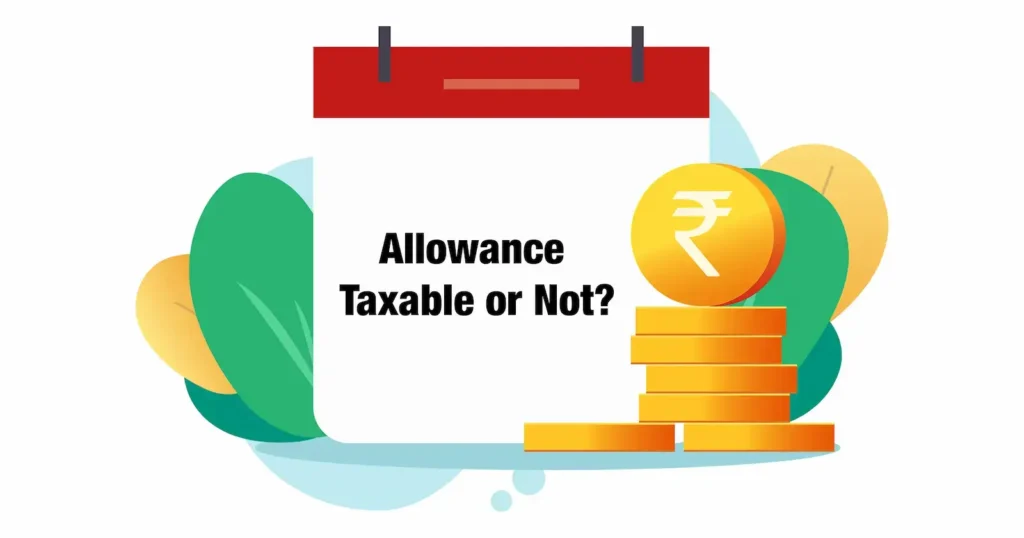
Employee salaries often include various allowances and reimbursements, some of which are partially or fully tax-exempt. Whether these exemptions apply depends on the tax regime chosen. The old tax regime, which allows for multiple exemptions, remains relevant for taxpayers who opt for it, while the new tax regime offers lower tax rates but with minimal exemptions.
Tax Exemption Limits Under the Old Tax Regime
1. House Rent Allowance (HRA)
- Exemption Limit: The least of the following is exempt from tax:
- Actual HRA received.
- 50% of annual salary (basic + DA) if living in metro cities; 40% if living in non-metro cities.
- Excess of annual rent paid over 10% of annual salary.
- Condition: HRA exemption is available only if rent is paid and receipts are maintained. If no rent is paid, the entire HRA is taxable. Additional Reading: All you need to know about HRA
2. Dearness Allowance (DA)
- Exemption Limit: Fully taxable for both government and non-government employees.
- Condition: No exemptions apply to DA.
3. Leave Travel Allowance (LTA)
- Exemption Limit:
- Exemption is available for up to two journeys in a block of four years.
- The exemption amount is the lower of actual expenditure or amount received from the employer.
- Only travel within India is eligible, and costs should be based on A/C first-class rail or economy class air travel.
- Condition: Claims must be supported by travel bills. Additional Reading: All you need to know about LTA
4. City Compensatory Allowance (CCA)
- Exemption Limit: Fully taxable.
- Condition: No exemption is allowed as it is considered part of basic salary.
5. Special Allowance
- Exemption Limit: Fully taxable.
- Condition: Any allowance not specifically covered by other exemptions is taxable.
6. Overtime Allowance
- Exemption Limit: Fully taxable.
- Condition: Paid for extra hours worked, but taxed as part of salary.
7. Children Education Allowance
- Exemption Limit: Up to ₹100 per month per child, or ₹1,200 per annum per child, for a maximum of two children.
- Condition: Exemption applies only for up to two children. Additional deductions for tuition fees can be claimed under Section 80C. Additional Reading: How to claim tax benefit on tuition fees under Section 80C
8. Hostel Expenditure Allowance
- Exemption Limit: Up to ₹300 per month per child, or ₹3,600 per annum per child, for a maximum of two children.
- Condition: Exemption applies for up to two children.
9. Fixed Medical Allowance
- Exemption Limit: Fully taxable.
- Condition: This is not to be confused with medical reimbursement. Fixed medical allowance does not require bill submissions.
10. Phone Bills Reimbursement
- Exemption Limit: No specific limit; should be reasonable based on salary and grade.
- Condition: To claim exemption, bills must be submitted to the employer.
Transport Allowance and Medical Reimbursement
- Tax Treatment: From FY 2018-19 onwards, the standard deduction of ₹50,000 replaced transport allowance and medical reimbursement exemptions.
- Condition: If these allowances are still part of the salary, they are fully taxable.
Standard Deduction
- Limit: ₹50,000 for the current FY 2021-22.
- Condition: It is a deduction from gross salary and applies to all salaried individuals, regardless of the specific allowances and reimbursements.
Choosing the Right Tax Regime
When deciding between the old and new tax regimes, consider the exemptions and allowances you are eligible for. The old tax regime offers a variety of exemptions, potentially reducing your taxable income significantly, while the new regime simplifies tax calculations with lower rates but fewer exemptions.
For a comprehensive comparison, review your allowances, reimbursements, and the overall tax impact of each regime to determine which will result in the greatest tax savings.
Related posts:
 The Nifty PSU Bank index climbs 1.5% following Finance Minister Sitharaman’s review meeting with the heads of public sector banks.
The Nifty PSU Bank index climbs 1.5% following Finance Minister Sitharaman’s review meeting with the heads of public sector banks.










